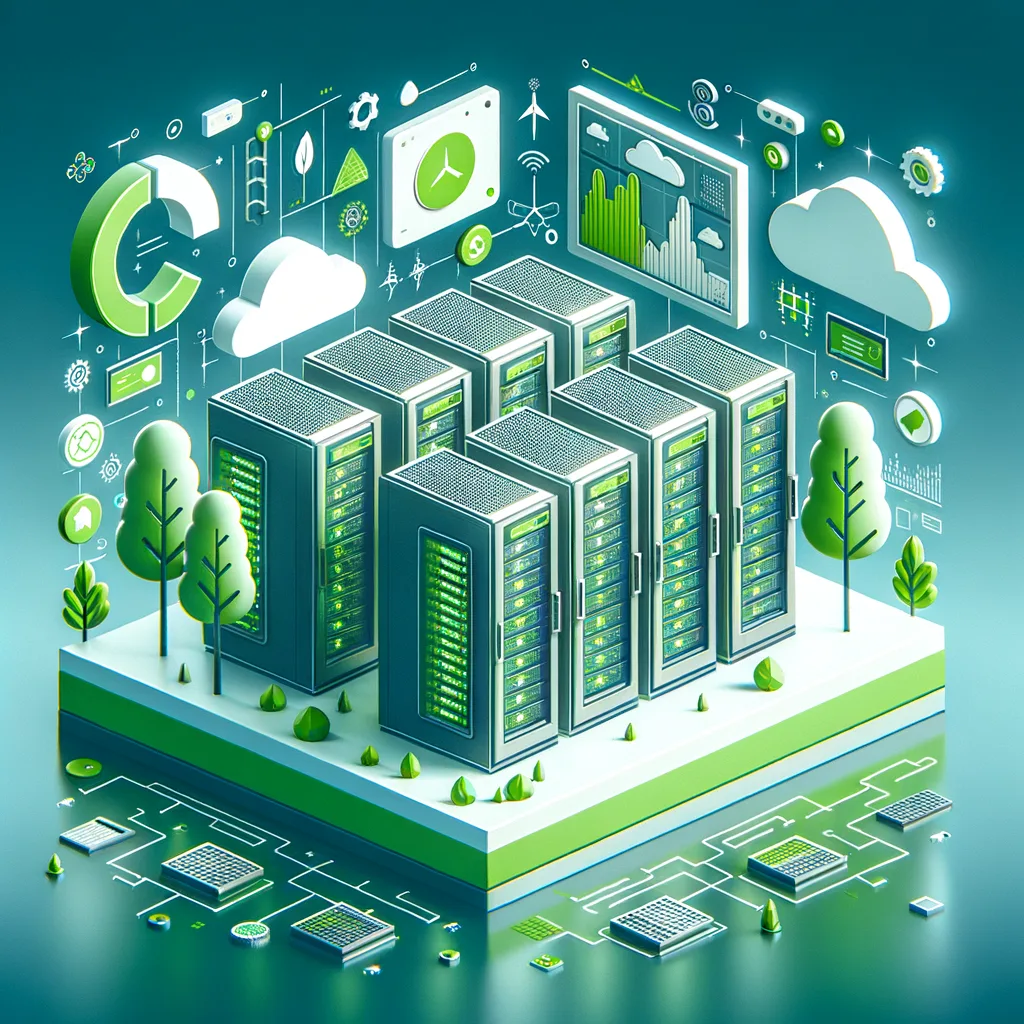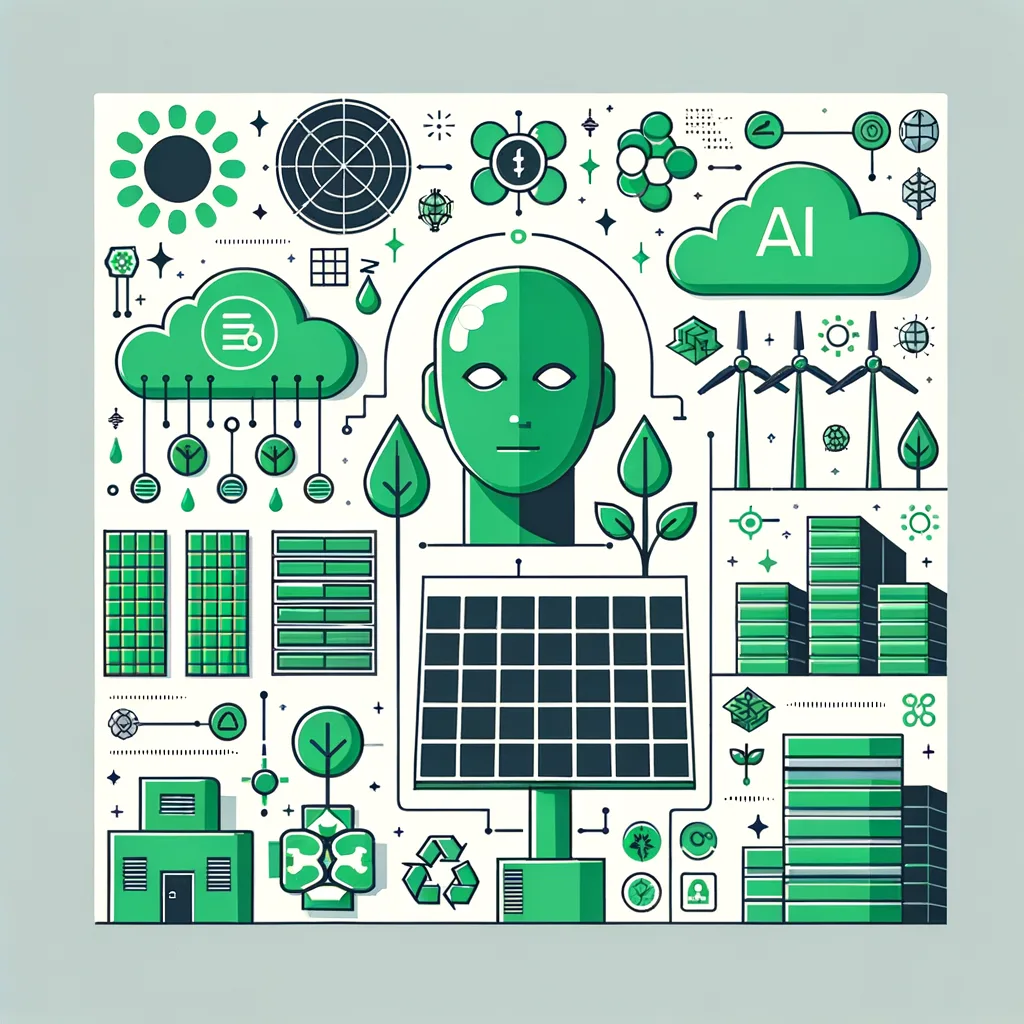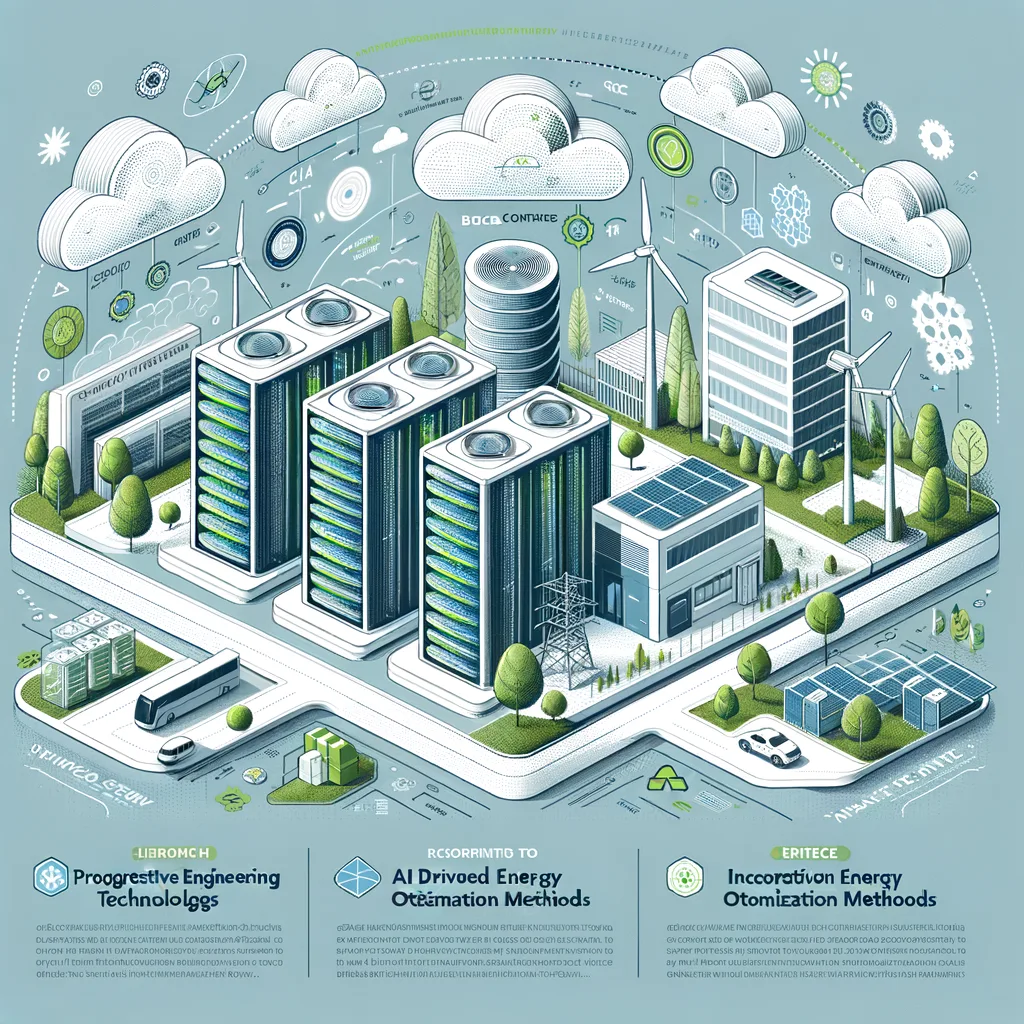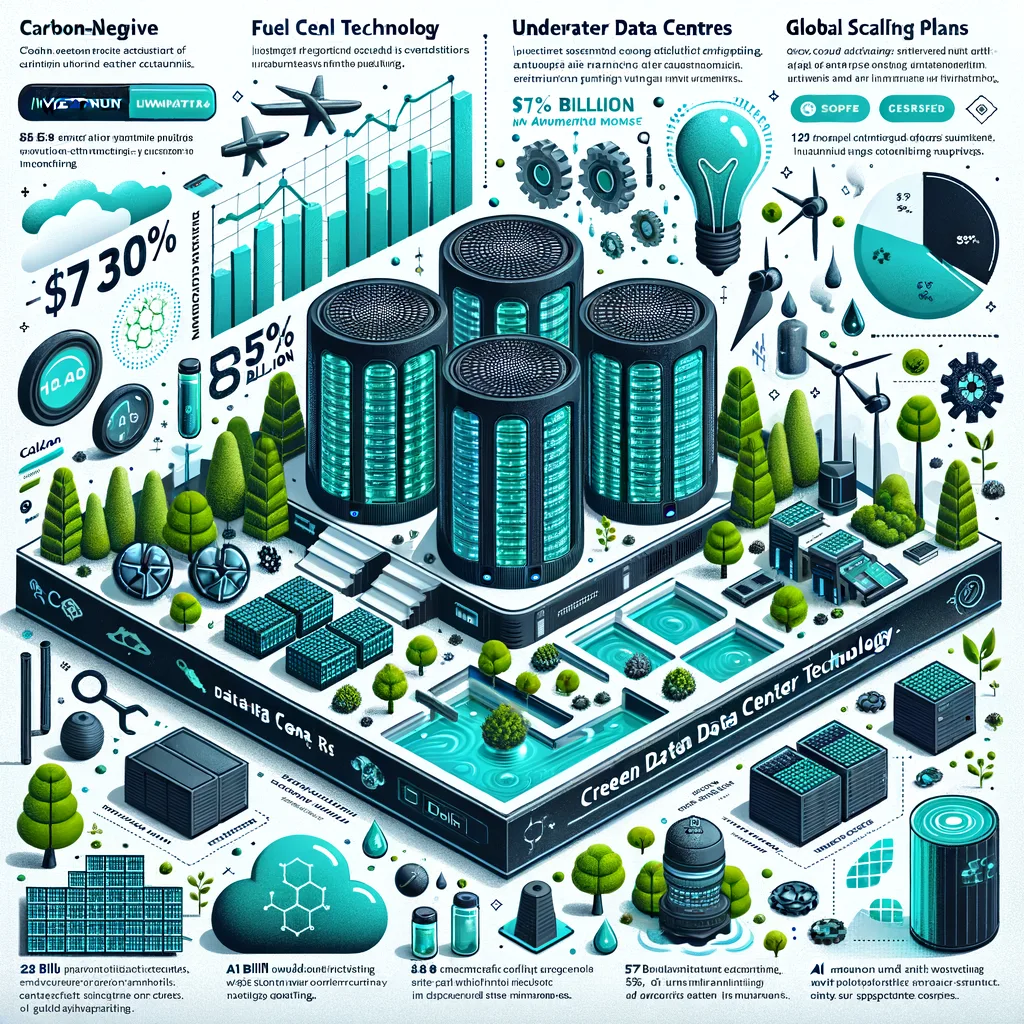Green Data Centers: The $323 Billion Revolution Transforming Cloud Computing

Table of Contents
Discover how green data centers are creating a $323 billion market opportunity by 2035, revolutionizing cloud computing with sustainable technologies and energy-efficient solutions.
The digital revolution has reached a turning point. While our insatiable appetite for data processing grows exponentially, so does our responsibility to protect the planet that hosts these computational powerhouses. Enter green data centers—the game-changing solution that’s transforming how we think about cloud infrastructure.
Here’s a startling reality: data centers currently consume 3% of the world’s electricity, with projections showing this could double by 2030. Yet here’s the opportunity that’s capturing global attention: businesses switching to green cloud computing can slash their energy costs by up to 30% while dramatically reducing their carbon footprint.
The numbers tell an extraordinary story. The global green data center market has exploded from $70.45 billion in 2024 to a projected $323.1 billion by 2035, representing a compound annual growth rate of 13.25% to 19%. This isn’t just growth—it’s a fundamental shift in how enterprises approach cloud infrastructure.
But what’s driving this massive transformation? Three converging forces are creating the perfect storm: escalating energy costs, stringent environmental regulations, and corporate sustainability commitments that are no longer optional. Major tech giants like Google, Microsoft, and Amazon are investing billions in carbon-neutral data centers, setting the standard for an entire industry.
💡 Pro Tip: Companies that adopt green data center strategies early aren’t just reducing costs—they’re positioning themselves for competitive advantage as sustainability becomes a key differentiator in enterprise purchasing decisions.
This comprehensive guide explores how green data centers are revolutionizing cloud computing, the technologies driving this transformation, and why 2025 marks the inflection point for sustainable digital infrastructure.
The Current Landscape: A Market in Transformation

The green data center market represents one of the fastest-growing segments in enterprise technology. North America dominates with over 37% market share, driven by hyperscale providers like Amazon Web Services, Microsoft Azure, and Google Cloud aggressively investing in sustainable infrastructure.
However, the most explosive growth is happening in Asia-Pacific. India’s green data center market alone is projected to grow from $3.4 billion in 2024 to $18.7 billion by 2033—a staggering 20.83% CAGR. This regional expansion reflects the global nature of digital transformation and the universal pressure to adopt sustainable practices.
Market Dynamics and Key Players
The competitive landscape features established infrastructure giants alongside innovative climate tech startups. Leading players include ABB, Cisco Systems, Dell, Digital Realty Trust, Equinix, IBM, and Schneider Electric, each bringing unique strengths to the sustainable data center ecosystem.
📝 Note: The market is experiencing a fundamental shift from traditional efficiency metrics to comprehensive sustainability frameworks that include carbon footprint, renewable energy usage, and circular economy principles.
What’s particularly striking is the investment momentum. According to the State of Climate Tech Q1 ’25 report, funding for renewable-powered data centers is projected to grow by 24% year-on-year. This surge reflects both the urgency of climate commitments and the recognition that green data centers offer superior long-term economics.
Regulatory Drivers and Corporate Commitments
Government initiatives worldwide are accelerating adoption. The European Union’s Climate Neutral Data Centre Pact and U.S. Energy Efficiency and Renewable Energy Initiatives are compelling organizations to adopt eco-friendly solutions. These aren’t suggestions—they’re requirements with real financial consequences for non-compliance.
Corporate sustainability goals are equally powerful drivers. Microsoft aims to be carbon negative by 2030, while Google has committed to running entirely on carbon-free energy by the same deadline. These commitments create ripple effects throughout supply chains, forcing smaller enterprises to adopt similar standards.
⚠️ Important: Companies that delay green data center adoption risk facing carbon taxes, regulatory penalties, and competitive disadvantages as sustainability becomes a standard procurement criterion.
The urgency is real. IDC predicts that by 2025, over 60% of enterprises will consider sustainability a key factor in selecting cloud providers. This shift from “nice-to-have” to “must-have” is fundamentally reshaping vendor selection processes across industries.
Technical Deep Dive: The Engineering Behind Green Data Centers

Green data centers represent a convergence of multiple advanced technologies working in harmony to maximize efficiency while minimizing environmental impact. Understanding these technologies is crucial for organizations planning their sustainable infrastructure strategies.
Advanced Cooling Technologies
Traditional air cooling is rapidly becoming obsolete for high-density workloads. Liquid cooling technologies, including direct-to-chip and immersion cooling, are gaining significant traction to support AI and high-performance computing applications while dramatically reducing energy consumption.
Direct-to-chip cooling systems deliver coolant directly to heat-generating components, achieving Power Usage Effectiveness (PUE) ratios as low as 1.1 compared to 1.6 for traditional air cooling. Immersion cooling, where servers operate submerged in dielectric fluid, can achieve even better efficiency while enabling unprecedented compute density.
💡 Pro Tip: Organizations deploying AI workloads should prioritize data centers with liquid cooling capabilities, as traditional air cooling cannot efficiently handle the heat output of modern GPU clusters.
Renewable Energy Integration and Smart Grid Technologies
Modern green data centers are becoming energy producers, not just consumers. On-site renewable energy sources, including solar panels, wind turbines, and emerging hydrogen fuel cells, are reducing grid dependency while providing long-term cost stability.
Smart grid integration allows data centers to optimize energy consumption based on renewable availability. Carbon-aware cloud computing processes workloads in locations with the lowest carbon footprint, automatically shifting computational loads to facilities powered by clean energy.
AI-Powered Energy Management
Artificial intelligence is revolutionizing data center efficiency. Google already uses AI to improve data center efficiency by 40%, employing machine learning algorithms to predict cooling needs, optimize power distribution, and prevent energy waste.
AI-driven predictive analytics can anticipate equipment failures, optimize server utilization, and dynamically adjust cooling based on workload demands. These systems operate in real-time, making thousands of micro-adjustments daily to maintain peak efficiency.
Server Architecture and Virtualization Innovations
Modern green data centers leverage advanced server architectures designed for energy efficiency. ARM-based processors, optimized for specific workloads, can deliver the same performance as traditional x86 systems while consuming significantly less power.
Virtualization and containerization technologies enable higher server utilization rates, reducing the total number of physical servers required. Kubernetes orchestration automatically scales applications based on demand, ensuring resources are used efficiently without maintaining idle capacity.
📝 Note: The shift to microservices architecture enables more granular resource allocation, allowing data centers to match compute resources precisely to application requirements.
Waste Heat Recovery and Circular Economy Principles
Leading green data centers implement waste heat recovery systems that capture and repurpose thermal energy for heating nearby buildings or industrial processes. This circular approach transforms waste into valuable resources, improving overall energy efficiency.
Some facilities achieve remarkable efficiency by integrating with district heating systems, turning data centers into community energy sources that provide both computational services and sustainable heating.
Industry Applications and Real-World Case Studies
Green data centers are proving their value across diverse industries, from financial services to manufacturing. These real-world implementations demonstrate both the feasibility and benefits of sustainable cloud infrastructure.
Financial Services: JPMorgan Chase’s Carbon-Neutral Initiative
JPMorgan Chase has committed to achieving carbon neutrality by 2030, with data center transformation playing a central role. The bank is migrating critical workloads to green cloud providers and implementing energy-efficient private cloud infrastructure that reduces power consumption by 25% while maintaining 99.99% uptime.
The financial benefits are substantial. Energy cost savings of $15 million annually combined with improved operational efficiency have created a compelling business case that’s influencing industry-wide adoption.
Healthcare: Kaiser Permanente’s Sustainable Digital Infrastructure
Kaiser Permanente’s transition to green data centers supports 8.7 million patient records while reducing energy consumption by 30%. The healthcare giant leverages edge computing in green micro-data centers to process patient data locally, reducing latency for critical applications while minimizing environmental impact.
💡 Pro Tip: Healthcare organizations should prioritize green data centers with redundant renewable energy sources, as sustainability goals must never compromise patient care reliability.
Manufacturing: Siemens’ Industry 4.0 Green Cloud Strategy
Siemens has integrated green data centers into its Industry 4.0 digital factory framework, processing IoT sensor data from manufacturing equipment in sustainable cloud infrastructure. The result: 20% reduction in overall factory energy consumption through optimized production scheduling and predictive maintenance powered by AI analytics.
E-commerce: Shopify’s Carbon-Neutral Commerce Platform
Shopify operates its global e-commerce platform entirely on renewable-powered data centers, processing millions of transactions daily with net-zero carbon emissions. The company’s commitment to sustainability has become a competitive advantage, attracting environmentally conscious merchants and consumers.
⚠️ Important: These case studies demonstrate that green data center ROI typically occurs within 12-24 months, making sustainability initiatives financially attractive even without considering regulatory benefits.
Technology Sector: Microsoft’s Carbon-Negative Data Centers
Microsoft’s commitment to being carbon negative by 2030 includes revolutionary data center designs that actually remove more carbon from the atmosphere than they emit. The company is piloting fuel cell technology and underwater data centers that leverage renewable energy sources while providing natural cooling.
Early results show 50% improvement in energy efficiency compared to traditional facilities, with plans to scale these innovations globally.

Market Analysis and Future Outlook
The green data center market is entering a period of unprecedented expansion, driven by technological breakthroughs, regulatory requirements, and economic incentives that align sustainability with profitability.
Investment Trends and Funding Patterns
Global data center investment has averaged $7 billion annually since 2020, but green data center investments are growing at 24% year-over-year. This acceleration reflects institutional investor recognition that sustainable infrastructure offers superior long-term returns.
Climate-focused venture funds and infrastructure investors are deploying billions into green data center technologies. Renewable energy integration, liquid cooling systems, and AI-powered efficiency tools are attracting the largest investment commitments.
💡 Pro Tip: Organizations planning data center investments should prioritize partners with strong sustainability credentials, as green infrastructure commands premium valuations and better financing terms.
Technological Evolution Timeline
The next 24 months will see critical technological milestones that accelerate green data center adoption:
2025: Widespread deployment of liquid cooling systems for AI workloads and carbon-aware computing that automatically optimizes for clean energy availability.
2026: Hydrogen fuel cell integration reaches commercial viability for backup power systems, while quantum computing cloud services begin requiring specialized green infrastructure.
2027: 100% renewable energy becomes standard for hyperscale providers, with waste heat recovery systems integrated into urban infrastructure planning.
Regional Growth Patterns
📝 Note: Asia-Pacific’s exceptional growth reflects both rapid digitalization and government initiatives promoting sustainable technology adoption.
Challenges and Barriers to Adoption
Despite impressive growth projections, green data centers face implementation challenges. Higher initial capital requirements and skills gaps in sustainable infrastructure management remain significant barriers for smaller organizations.
However, cloud-based green infrastructure services are democratizing access to sustainable computing, allowing companies to benefit from green data centers without massive upfront investments.
The shortage of renewable energy capacity in some regions creates bottlenecks, but innovative solutions like power purchase agreements and virtual power plants are expanding access to clean energy.
Frequently Asked Questions
What exactly makes a data center “green”?
Green data centers minimize environmental impact through energy-efficient technologies, renewable energy sources, advanced cooling systems, and sustainable design principles. Key metrics include Power Usage Effectiveness (PUE) below 1.3, renewable energy usage above 80%, and comprehensive waste reduction programs.
How much can companies save by switching to green data centers?
Organizations typically achieve 25-35% energy cost savings within 18-24 months, with additional benefits including regulatory compliance, improved brand reputation, and access to green financing options.
Are green data centers reliable enough for mission-critical applications?
Yes, leading green data centers achieve 99.99% uptime through redundant renewable energy systems, advanced cooling technologies, and intelligent failover mechanisms that match or exceed traditional facilities.
What’s the typical ROI timeline for green data center investments?
Most organizations see positive ROI within 12-24 months, with payback accelerated by energy savings, carbon credit revenues, and regulatory incentives.
How do green data centers handle peak demand when renewable energy isn’t available?
Modern green data centers use battery storage systems, smart grid integration, and carbon-aware workload scheduling to manage demand fluctuations while maintaining sustainability commitments.
What skills do IT teams need to manage green data center infrastructure?
Key competencies include renewable energy systems, AI-powered efficiency tools, liquid cooling technologies, and sustainability metrics analysis. Many organizations partner with specialized providers during the transition.
Can small businesses benefit from green data center technology?
Absolutely. Cloud-based green infrastructure services allow small businesses to access sustainable computing without large capital investments, often at competitive or lower costs than traditional alternatives.
What government incentives are available for green data center adoption?
Incentives vary by region but commonly include tax credits for renewable energy integration, accelerated depreciation for efficient equipment, and grants for sustainability initiatives. The EU and US offer particularly strong programs.
How do green data centers impact application performance?
Properly designed green data centers improve performance through advanced cooling that enables higher compute density, AI optimization that reduces latency, and edge computing that processes data closer to users.
What’s the future timeline for industry-wide green data center adoption?
Industry analysts predict 70% of enterprises will prioritize sustainability in cloud provider selection by 2027, with universal adoption of basic green practices by 2030.
The green data center revolution represents more than technological evolution—it’s a fundamental reimagining of how digital infrastructure can serve both business objectives and environmental responsibility. With market projections reaching $323 billion by 2035 and proven ROI timelines of 12-24 months, sustainable cloud computing has moved from optional initiative to competitive necessity.
Organizations that embrace this transformation today position themselves for long-term success in an increasingly sustainability-conscious marketplace. The question isn’t whether to adopt green data center strategies—it’s how quickly you can begin the transition.
Ready to start your green data center journey? Explore our comprehensive templates and frameworks designed to accelerate your sustainable cloud transformation at prebuilttemplates.com.
IF YOU REACH AT END, GO GIVE A LOOK AT blogs ON OUR MAIN website.
